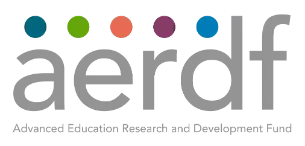Tom Vander Ark was recently at ISTE 2024 where he got the chance to sit down with Auditi Chakravarty, CEO of the Advanced Education Research and Development Fund (AERDF). Auditi had just finished leading a session at ISTE, which focused on K-12 demand for evidence of the EdTech lifecycle, including evaluation, implementation, and outcomes.
This conversation came on the heels of writing Unfulfilled Promise: The Forty-Year Shift From Print to Digital and Why It Failed to Transform Learning for the Hoover Institute. This paper addressed many of the points mentioned in a recent study that found that school districts accessed an average of 2,591 edtech tools and students and educators both averaged about 42 tools in the 2022 to 2023 school year.
This number was then complicated by the fact that the number of unique digital solutions accessed by educators decreased by more than 14% over the year prior – highlighting that educators may be starting to feel “tech fatigue.”Tom sat down with Auditi live at ISTE to discuss what’s next for EdTech.
Read the article here.
The NWEA results show achievement gaps continuing to widen. For example, Asian students are showing some growth, but made fewer gains in math last year than during the pre-COVID years. White, Black and Hispanic students, however, continue to lose ground. In both elementary and middle school, Hispanic students need the most additional instruction to reach pre-COVID levels, the data shows.
In reading, the gap between pre-pandemic growth and current trends widened by an average of 36%, compared with 18% in math. It’s possible, Karyn Lewis, director of research and policy partnerships for NWEA added, that districts focused extra recovery efforts on math because initial data on learning loss showed those declines to be the most severe.
But that’s left many students without the reading skills to tackle harder books and vocabulary as they move into high school, said Rebecca Kockler, who leads Reading Reimagined, a project of the nonprofit Advanced Education Research and Development Fund. The organization is funding research to find which literacy strategies work with adolescents, who are easily turned off by books intended for young kids. The pandemic, she said, only exacerbated a longstanding literacy problem for older students.
“About 30% of American high schoolers for 30 years have been proficient readers, and that really hasn’t changed,” said Kockler, a former Louisiana assistant superintendent who oversaw a redesign of the state’s reading program. “It’s always the hardest to move middle school reading results, and even some of the success we would see in fourth grade didn’t always carry up into middle school.”
Read the article here.
We showcase specific results of two R&D projects – CueThinkEF+ and Our Mathematical World – and an analysis of six projects actively engaging students and educators in Inclusive R&D. The CueThinkEF+ team share the process and outcomes of deeply integrating teacher expertise as they sought to develop and improve a web-based learning system focused on rich mathematics problem solving and discourse. Then, the Our Mathematical World team share their journey in the development of a mathematics curriculum overlay in which 3rd-5th grade students design stories that center themselves as strong mathematical problem solvers.
After three years of Inclusive R&D, preliminary data suggest many of our approaches are improving mathematics learning. We are simultaneously increasing knowledge of the relationship between mathematics learning and EF skills. The attention to equity and educator voice in the R&D process is producing approaches that are aligned with classroom practice. This session engages participants in examining the findings from a portfolio thematic analysis, with perspectives from various teams, including both educators and researchers. We then discuss the implications and applications of this work with all session participants, focusing on promising opportunities for integrating EF and equity within math learning experiences, and ways researchers and educators can collaborate together to do so.
